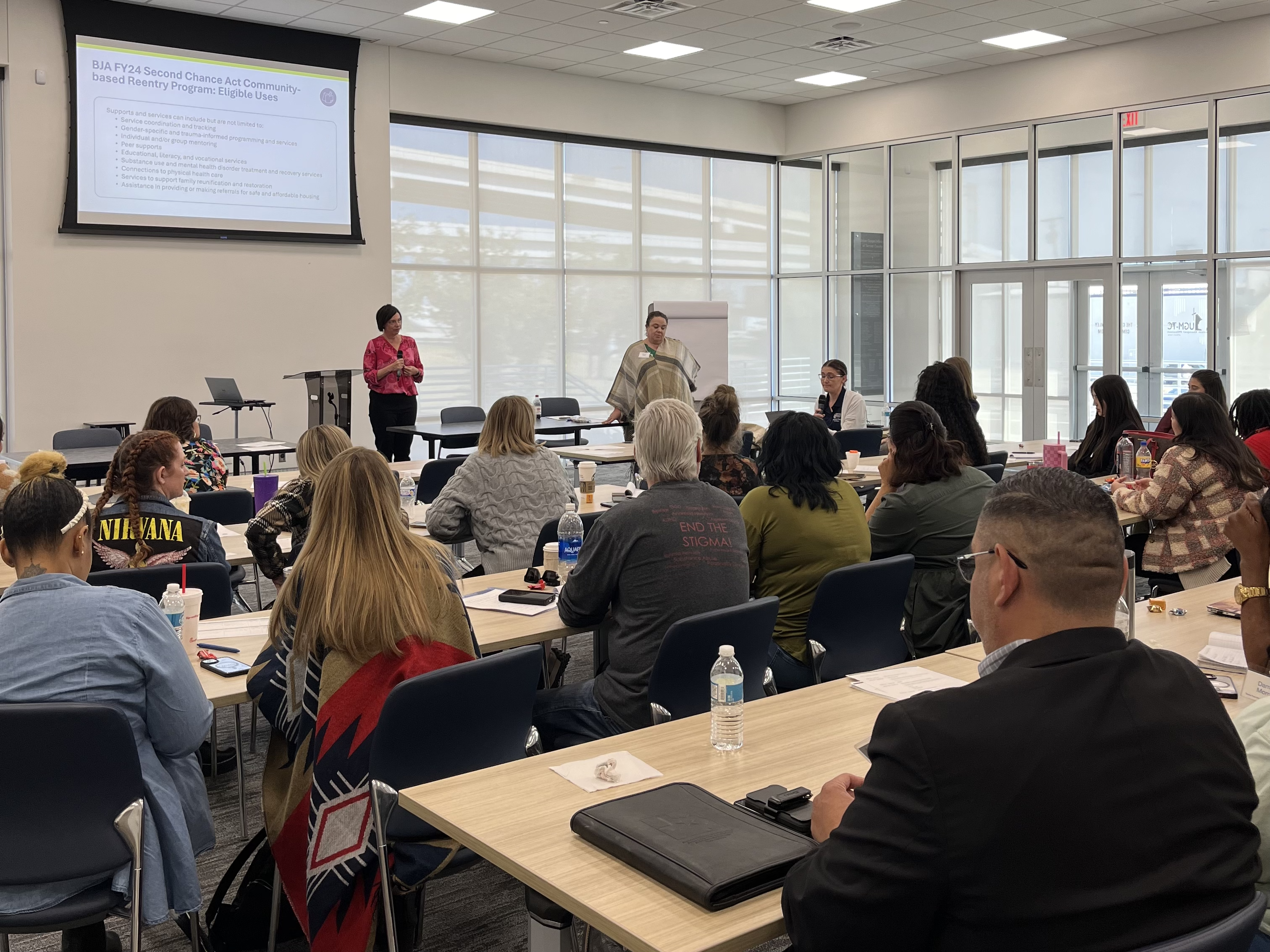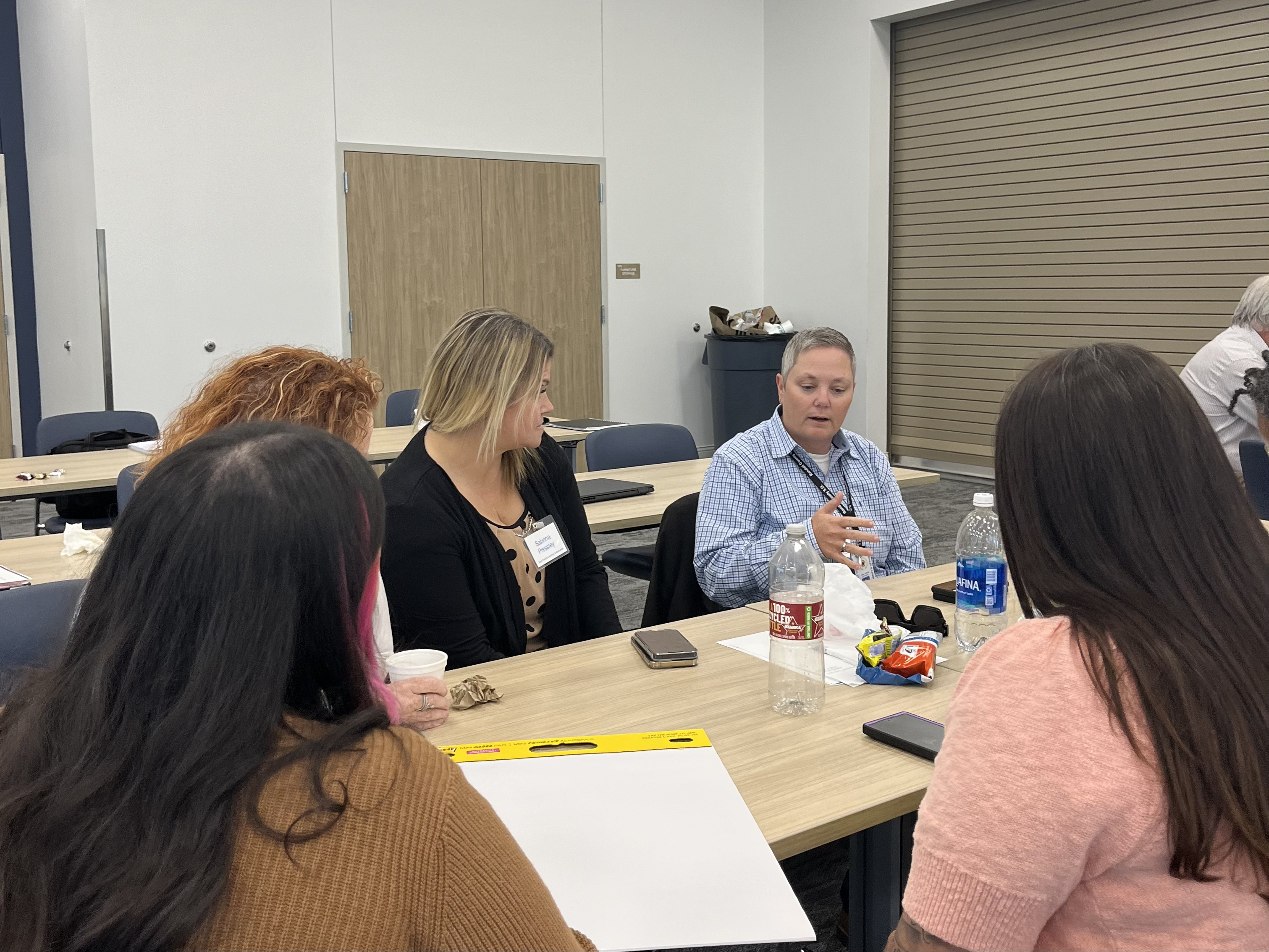
Learning Together: Reentry Collaborative Kicks Off In-Person Meeting
In September 2024, the Texas Health and Human Services Commission (HHSC) Office of Forensic Coordination, in collaboration with Rulo Strategies, LLC and the Texas Institute for Excellence in Mental Health (TIEMH), launched a new Learning Collaborative focused on Reentry services with a cohort of 14 Texas counties.
On October 17, the collaborative convened with 29 participants from 13 of the participating counties in Fort Worth for a two-day, in-person gathering to discuss various aspects of reentry programs and models. Participants got to share insights, forge partnerships, and create a vision for their county’s reentry initiatives.
Collaboration in Action
I'd rather be a thread in the net than a lone string. - Learning Collaborative Panelist
The Collaborative facilitators, Rulo Strategies, strategically planned the workshop to go beyond structured presentations, fostering a spirit of collaboration among attendees. There were several instances when attendees acknowledged shared challenges, offering solutions they had implemented in their own communities. Breakout groups exchanged notes across the room, contact information, and even committed to facilitating essential connections moving forward.
Implementation Stories
On the first day, two panels shared several programs that showcased reentry models in action and topics on building partnerships emphasizing the role of collaboration, community involvement and peer support. Participants were encouraged to imagine how these examples could be adapted to their community needs. Some examples that were shared include:
Reentry First Stop Center for Tarrant County (FCTC) provides employment, housing, and reentry transportation support. The center has a goal to break the cycle of crime and recidivism, which can be seen through its recidivism rate of 21%, compared to the county average of 51%.
West Texas Centers coordinates with Howard County Jail, to provide in-jail services as well as transport individuals to a respite or diversion center. This was an invaluable example of how a rural jail diversion program collaborates with law enforcement, peer workers, case managers and medical professionals to provide essential reentry services.
Grayson, Fannin, and Cooke Counties are partnered with Texoma Community Center to address the many individuals returning to jail from repeated interactions with law enforcement shortly after their release. They shared the roles and responsibilities of stakeholders involved in their coalition that has made strides such as reducing the time it takes to provide medication to inmates from 10.5 months to 4 weeks.
Common Barriers
The second day featured concise presentations reflecting recurring themes and attendee interests that emerged from Day 1 discussions. This was followed by county-specific action planning exercises that many found valuable, with many expressing similar challenges faced in their respective communities. Some stand-out themes included HIPAA-compliant data sharing, housing barriers and funding.
Community Stand Out Challenges
Key Take Aways
The in-person gathering successfully fostered a dynamic exchange of challenges, resources, and innovative strategies across different Texas reentry landscapes.
Speakers urged participants to engage in policy and legislative advocacy to drive systemic change (see: Clean Slate Initiative). As one participant noted, “Constituents have the most power.”
Furthermore, reentry stakeholders were encouraged to center peer voices through an equity-based lens that is essential for meaningful reentry support. Panelists with lived experience of incarceration shared critical insights, stating the importance of compensating peers fairly and avoiding tokenism. Additionally, pre-release services and peer workers were highlighted as significant components of successful reentry initiatives. Designating a point person to build visibility and relationships was a highly recommended strategy to help maintain momentum.
Looking Ahead
This day and a half session generated a contagious energy for improvement and collaboration among participants. The reentry learning collaborative is well-positioned to make continued progress toward more effective and tailored reentry solutions across Texas through their monthly meetings and beyond.
As one participant reflected: “This is amazing. It has answered a lot of questions we’ve had for a while. Taking this back to our community partners will be invaluable—they are going to be so excited about this.”
To learn more about the goals of the Reentry Learning Collaborative visit the Learn & Engage page on the Texas Behavioral Health and Justice Technical Assistance Center website.


